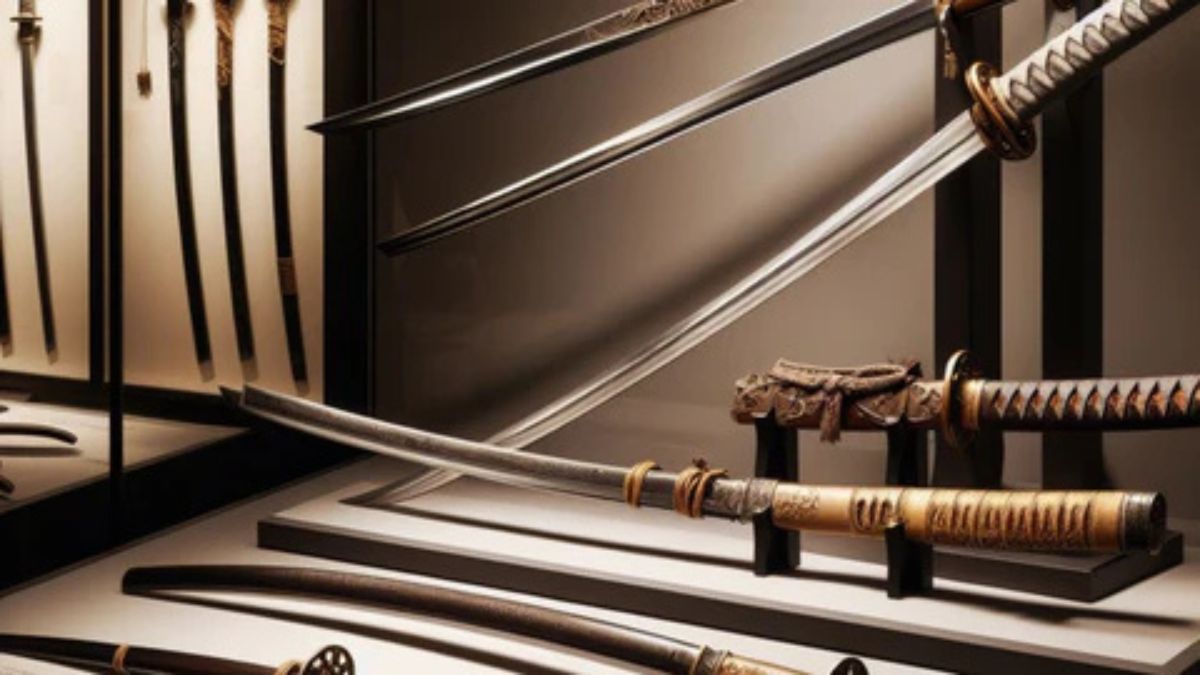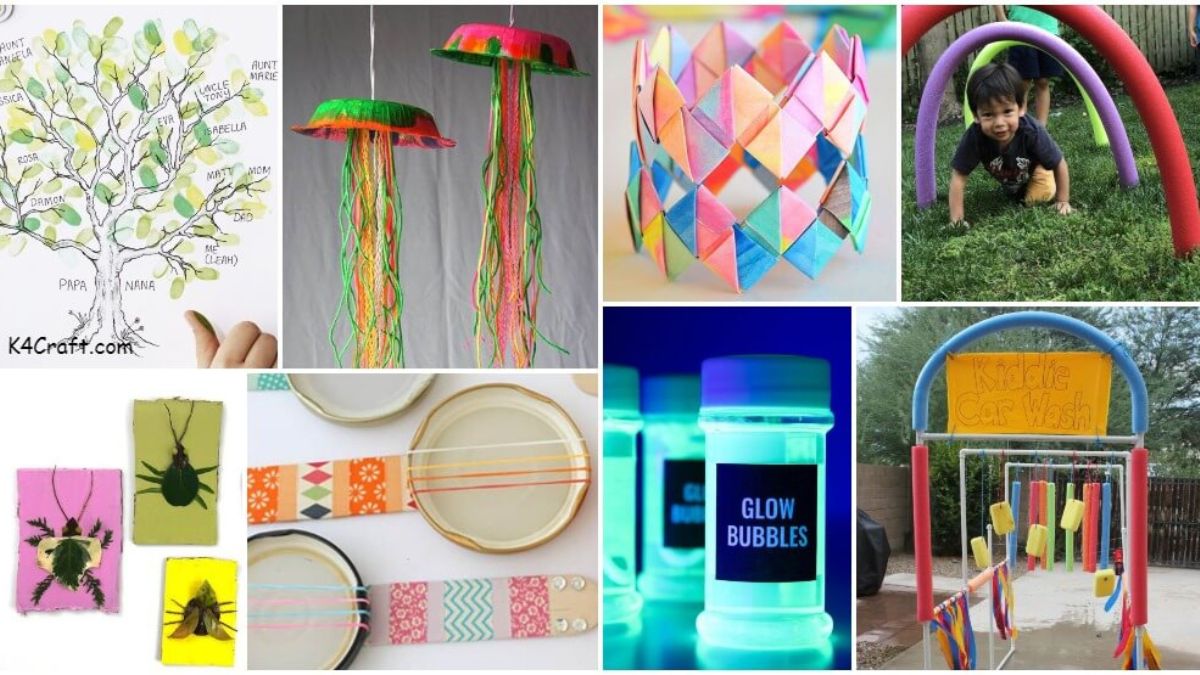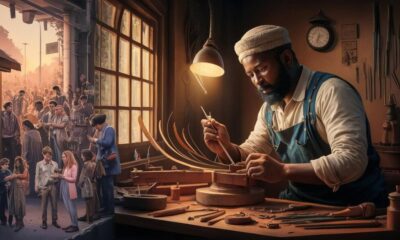HOME
The Art of the Odachi: Unveiling Japan’s Giant Sword

The odachi, a massive and awe-inspiring sword, captures the imagination of both history buffs and martial arts enthusiasts alike. This Japanese giant sword is not just a weapon; it embodies centuries of craftsmanship, tradition, and artistry. With its long blade often exceeding four feet in length, the odachi stands as a symbol of power and skill in the hands of legendary warriors. As we delve into its fascinating world, prepare to uncover stories that have shaped Japan’s martial heritage. From its origins steeped in ancient battles to the meticulous art of swordsmithing that brings each piece to life, join us on this journey through time as we unveil the intricacies behind Japan’s iconic odachi!
History and Origins of the Odachi
The odachi, a colossal sword steeped in history, traces its roots back to feudal Japan. Emerging during the late Heian period (794-1185), this imposing weapon was crafted for battle and ceremonial purposes.
Initially designed for foot soldiers and cavalry, it demonstrated both power and status. The name “odachi” translates to “large sword,” aptly reflecting its size—often exceeding 3 feet in blade length.
As warfare evolved, so did the role of the odachi. It became a symbol of honor among samurai warriors. The craftsmanship involved in making these swords was intricate and revered.
Legends abound about famous battles where odachi wielders displayed exceptional skill. These narratives contributed to their mystique within Japanese culture, forever entwining them with national identity and pride.
The Making of an Odachi: Traditional Japanese Swordsmithing
Crafting an odachi is a meticulous process steeped in tradition. It begins with selecting high-quality tamahagane, the steel prized for its unique properties. This raw material undergoes smelting in a tatara furnace, where iron sand and charcoal create the perfect alloy.
Once the steel is ready, swordsmiths employ ancient techniques to forge the blade. The odachi’s length demands exceptional skill; it’s not just about size but also balance and aesthetics. Hammering and folding the metal repeatedly ensures strength while enhancing its beauty.
Heat treatment plays a crucial role in defining the blade’s edge. Each swordmaker has their method, but all aim for that coveted combination of sharpness and durability.
Polishing transforms the rough surface into a gleaming masterpiece. Different grades of stones are used meticulously to reveal intricate patterns known as hada, which tell stories of craftsmanship passed down through generations.
Characteristics and Features of the Odachi
The odachi stands out due to its impressive size. Typically measuring over 3 shaku (about 90 cm), it demands respect and awe from those who encounter it. This length allows for powerful, sweeping strikes that can be both intimidating and effective in battle.
Its blade often features a distinctive curvature, which enhances cutting ability while maintaining strength. The craftsmanship is meticulous, with folding techniques used to create resilient steel that can withstand the rigors of combat.
The hilt is long enough to accommodate two hands comfortably, allowing for better control during use. Often adorned with intricate tsuba (guard) designs, each sword tells a story through its artistry.
Weight distribution plays a crucial role as well; despite its size, an odachi feels balanced in skilled hands. This combination of size, design, and balance makes the odachi not just a weapon but also a symbol of martial prowess and tradition in Japan’s rich history.
Famous Odachi Swordsmen and Battles
Throughout history, several renowned swordsmen have wielded the odachi in battle. One such figure is Minamoto no Yoshitsune, a legendary warrior of the late Heian period. Known for his strategic brilliance and unmatched skill, he famously used an odachi during conflicts against the Taira clan.
Another notable swordsman was Saito Musashibo Benkei. This imposing figure became a folk hero for his valor and loyalty. Benkei often fought alongside Yoshitsune, showcasing his prowess with the giant sword in fierce battles that defined their era.
The Battle of Dan-no-ura remains one of the most famous encounters featuring these warriors. Here, both strategy and raw power came into play as they showcased their mastery over large weapons like the odachi.
These figures not only shaped Japan’s martial history but also helped immortalize the odachi’s place within it through their legendary exploits on the battlefield.
Modern Day Use and Display of the Odachi
Today, the odachi has found its way into various spheres of modern life. Sword enthusiasts and collectors often showcase these magnificent blades in their homes or galleries. A carefully curated display can highlight the beauty and craftsmanship of this historical weapon.
Martial arts practitioners have also embraced the odachi. Some schools incorporate it into training sessions to teach students about balance and technique required for wielding such a large sword. This practice keeps traditional skills alive while promoting physical fitness.
Cultural events, festivals, and reenactments frequently feature odachi displays. Participants donning period attire demonstrate the sword’s significance in Japanese history. The visual impact of an odachi captivates audiences, sparking interest in Japan’s rich martial heritage.
Artisans create replicas for educational purposes or decorative pieces that reflect cultural appreciation. Each piece tells a story, connecting people with Japan’s fascinating past through art and skillful design.
Controversies Surrounding the Authenticity of Odachi Swords
The odachi, with its imposing size and elegant craftsmanship, has sparked considerable debate among collectors and historians. Many enthusiasts argue that some modern replicas are misrepresented as authentic antiques. This blurs the line between genuine historical artifacts and contemporary creations.
Moreover, the scarcity of documented provenance for certain pieces fuels skepticism. Without clear histories, it becomes challenging to determine if a sword is an original odachi or merely a skilled imitation.
Additionally, disputes often arise around restoration practices. Some purists believe that any alteration diminishes a sword’s authenticity. Others contend that careful restoration can preserve the item’s legacy while enhancing its beauty.
As interest in these grand swords grows globally, so does the scrutiny surrounding their authenticity. The odachi remains not only a symbol of Japanese martial prowess but also a focal point for ongoing discussions about heritage and craftsmanship.
Conclusion: The Enduring Legacy of Japan’s Giant Sword
The odachi stands as a testament to Japan’s rich cultural history and craftsmanship. This giant sword is not just a weapon; it embodies the artistry and skill of traditional Japanese swordsmiths. Each blade tells a story of its creation, from the forging process to the battles it has witnessed.
Today, enthusiasts and collectors cherish odachi swords for their unique beauty and historical significance. They are displayed in museums, showcased at martial arts events, or even used in modern kendo practice by skilled practitioners who appreciate their weight and length.
While debates over authenticity continue to swirl around some examples of odachi, they remain an iconic symbol within Japanese heritage. The fascination with these impressive weapons endures, capturing imaginations both in Japan and around the world.
As time marches on, the legacy of the odachi continues to inspire future generations—reminding us that art can take many forms beyond mere utility. Whether viewed through a lens of history or artistry, this giant sword will forever hold its place in Japan’s storied past.
HOME
DIY Projects with Prizmatem: Fun Ideas for Every Skill Level

Introduction to Prizmatem and its uses
Are you ready to unleash your creativity and transform everyday items into stunning works of art? Prizmatem is here to guide you on an exciting journey through the world of DIY projects. This versatile material offers endless possibilities for crafting, whether you’re a seasoned pro or just starting out. With its unique properties, Prizmatem allows you to explore new techniques while showcasing your personal style. From simple beginner-friendly ideas to complex advanced creations, there’s something for everyone in this vibrant realm of DIY magic. Grab your supplies and let’s dive into some fun projects that will inspire both novices and experienced crafters alike!
Easy DIY Projects with Prizmatem for Beginners
Starting with Prizmatem is a delightful adventure. Its versatility makes it perfect for beginners eager to explore DIY projects.
One simple idea is creating custom bookmarks. Just cut the Prizmatem into desired shapes and decorate them with your favorite colors or patterns. They make great gifts, too!
Another fun project involves making coasters. Slice the material into squares or circles, then embellish them using paint or markers. These personalized coasters will brighten up any coffee table.
For those who love nature, try crafting wall art with pressed flowers between layers of Prizmatem. The result? A stunning piece that brings a bit of outdoor beauty inside.
These easy projects not only build skills but also offer instant gratification as you see your creativity come to life!
Intermediate DIY Projects with Prizmatem: Taking It Up a Notch
Ready to elevate your crafting game? Intermediate DIY projects with Prizmatem are perfect for those looking to challenge their skills.
Consider creating custom wall art. Use various colors and textures of Prizmatem to craft unique pieces that reflect your personality. Layering different shapes can add depth and intrigue.
Another exciting project is making decorative planters. Transform basic pots by wrapping them in vibrant strips of Prizmatem, giving your plants a fresh new look. This adds flair while showcasing greenery beautifully.
How about designing a personalized photo frame? Cut out fun shapes from Prizmatem and glue them around an existing frame for an artistic twist on displaying memories.
With these projects, you’ll gain confidence as you explore the versatility of this material. Embrace creativity, enjoy the process, and watch your skills flourish!
Advanced DIY Projects with Prizmatem: Challenging and Rewarding Creations
For those ready to push their creative boundaries, advanced DIY projects with Prizmatem offer an exciting challenge. Imagine crafting intricate designs that dazzle the eye and transform spaces.
One captivating idea is creating custom light fixtures. The unique properties of Prizmatem allow you to experiment with shapes and colors, casting beautiful patterns across your walls.
Another option is building functional art pieces like a stylish coffee table or wall shelves. This not only showcases your craftsmanship but also adds a personal touch to your home decor.
Consider tackling outdoor projects too. A garden trellis adorned with Prizmatem accents can elevate any landscape, blending artistry with nature seamlessly.
The journey of working on these creations will enhance both skillset and confidence as you discover how versatile this material truly is. Each project becomes a testament to what can be achieved when creativity meets determination.
Creative Ways to Incorporate Prizmatem into Home Decor
Prizmatem opens up a world of creative possibilities for home decor. Its unique properties make it perfect for adding flair to any space.
Consider using Prizmatem in wall art. Create geometric designs or abstract pieces that catch the light beautifully. The play of colors can transform a simple room into an artistic haven.
Table centerpieces are another fantastic option. Mix Prizmatem with natural elements like wood and stone for an eye-catching contrast. This adds elegance while maintaining a warm vibe.
Don’t overlook lighting! Incorporating Prizmatem lamps can create stunning effects as they cast colorful patterns around your space, bringing warmth and creativity together seamlessly.
For those who love plants, try creating custom pots from Prizmatem materials. These vibrant planters will set off greenery perfectly, making your indoor garden even more inviting.
Think about coasters or trivets made from Prizmatem—functional yet stylish additions that spark conversation at gatherings.
Tips and Tricks for Working with Prizmatem
When working with Prizmatem, preparation is key. Always start by gathering all your tools and materials beforehand. This will save you time and keep your workspace organized.
Use a sharp utility knife or scissors for clean cuts. A precise cut can make all the difference in achieving a polished look for your projects.
Don’t rush through the drying process if you’re using adhesive. Allow ample time between each layer to ensure everything bonds properly.
Experiment with colors and textures to find combinations that resonate with your style. Mixing different shades of Prizmatem can create stunning visual effects.
Embrace mistakes as part of the creative journey. Sometimes an unexpected twist can lead to unique results you never envisioned!
Conclusion: The endless possibilities of DIY projects with
The beauty of working with Prizmatem lies in its versatility. Whether you are a beginner looking to dabble in DIY projects or an experienced crafter seeking complex challenges, there’s something for everyone.
Imagine transforming simple spaces with unique decor pieces made from Prizmatem. From wall art to functional items, the only limit is your creativity. Each project allows you to express yourself while honing your skills.
As you explore different techniques and styles, you’ll find new inspirations waiting around every corner. So gather your materials and let your imagination run wild—there’s no telling what amazing creations await when working with this remarkable material!
HOME
Rebuilding Your Future: A Guide To Starting Over After Tax Troubles

Tax troubles can be a daunting obstacle, impacting not only your current financial situation but also your prospects. When IRS issues arise, they can feel insurmountable, leaving you uncertain of where to turn or how to begin anew. But understanding your options and taking informed steps can make all the difference. Rebuilding your financial stability after such an event requires knowledge, support, and a solid plan of action. Keep reading to explore how you can overcome these challenges and pave the way to a more secure financial future.
Understanding Tax Troubles and Their Impact on Personal Finance
Individuals facing tax issues often experience a ripple effect in their finances. The primary concern starts with outstanding taxes owed, which may accumulate interest and penalties over time. This can lead to a significant burden that interrupts your ability to meet other financial obligations and plan for the future.
Moreover, tax problems can damage your credit score, create legal repercussions, and result in wage garnishments or liens against your property. It’s a cycle that can be difficult to break without appropriate intervention, making it critical to seek guidance promptly. The stress and complexity involved in tax troubles require a composed approach and a clear understanding of one’s financial situation.
For those who find themselves in tax-related difficulties, the feeling of isolation can be overwhelming. However, it’s important to remember that help is available. Whether through government relief programs or by finding a tax settlement near me, resources are at your disposal to navigate these troubled waters.
Adopting Smart Tax Practices to Prevent Future Issues
One of the best ways to prevent future tax difficulties is to adopt smart tax practices. This includes staying informed about tax laws and deadlines, keeping thorough records of income and deductible expenses, and ensuring that taxes are filed accurately and on time. Making mistakes on tax returns or missing deadlines can lead to unnecessary complications, including penalties and audits.
Utilizing the services of a professional tax preparer or investing in reputable tax software can minimize errors. A professional can offer personalized advice and help to maximize deductions and credits you may not be aware of. For many, the cost of these services is outweighed by the savings gained and the peace of mind provided.
Education can also be a formidable defense against tax issues. For example, pursuing a communications degree program can enhance one’s ability to effectively manage and convey financial matters, ensuring clarity in all tax-related communications. Being well-versed in tax legislation and communication strategies can serve as valuable tools in safeguarding against future tax problems.
Setting Realistic Goals and Creating a Financial Recovery Plan
Planning is crucial in overcoming financial distress caused by tax issues. Setting realistic goals forms the foundation of an effective financial recovery plan. Engage in a thorough review of your financial status, including income, expenses, debts, and assets, to outline a strategy that reflects your capabilities and limitations.
Budgeting plays a central role in financial recovery, allowing for careful tracking of expenses and ensuring that funds are allocated towards clearing tax debts. It may also reveal opportunities for cutting costs and saving, which can expedite the repayment process. Staying flexible and willing to adjust your budget and goals over time is equally important as your financial situation evolves.
Creating a debt repayment plan is also essential, and often involves prioritizing debts according to interest rates and other factors. Communication with creditors and the IRS is key; keeping them informed of your situation and your efforts to resolve outstanding debts can sometimes lead to more favorable terms or assistance.
Embracing a Fresh Start: Building a Stable Financial Future Post-Tax Trouble
Emerging from tax troubles offers an opportunity for a fresh start and the chance to build a more stable financial future. Learning from past experiences and making mindful decisions can help prevent repetitive cycles of tax-related issues. It’s a time to refocus on goals, reassess priorities, and put into practice the lessons learned during your journey to tax resolution.
Investing in your financial literacy is an ongoing process that nurtures a healthier approach to personal finance management. From understanding fundamental money management principles to staying alert to changes in tax regulations, continuous learning fuels informed decision-making and a readiness to take on financial challenges with confidence.
Overall, facing tax troubles can be a challenging period in anyone’s life, but with the right approach and a guiding hand, it can be overcome. By understanding your situation, exploring resolution options, setting attainable goals, and adopting better tax habits, you set the stage for a future unburdened by past tax issues. With patience and perseverance, a stable financial future is within reach, allowing you to embrace the fresh start you deserve.
HOME
The Prevalence of Alzheimer’s Disease

As populations around the globe age, the prevalence of Alzheimer’s disease continues to grow, affecting millions of families and putting pressure on healthcare systems. This degenerative brain disorder leads to memory loss, cognitive decline, and ultimately, loss of independence. Societal understanding of Alzheimer’s has expanded, yet many aspects of this condition remain enshrouded in mystery. This article will delve into the magnitude of its impact, the signs and symptoms, and advancements in research and treatment. Keep reading to uncover the complex world of Alzheimer’s disease and the ongoing quest for knowledge and a cure.
Understanding the Impact of Alzheimer’s Disease Worldwide
Alzheimer’s disease stands as a significant public health challenge with an extensive impact on individuals, families, and societies across the world. As the most common form of dementia, it not only strips away memory and cognitive abilities but also poses an enormous emotional and financial burden on caregivers. The complexity of the disease complicates issues of diagnosis, care, and treatment, making it a priority area for global health policy.
Demographical shifts toward an older population have seen the rates of Alzheimer’s escalate, with estimates indicating a rising trend over the coming decades. The disease is not limited by geography or economics, affecting people in developed and developing nations. Yet, its prevalence and the quality of care available can vary greatly, often influenced by a country’s healthcare infrastructure and resources dedicated to geriatric care.
In response to the growing need for solutions, international bodies and local governments are increasingly focusing on Alzheimer’s research and support systems. Organizations worldwide run awareness campaigns, provide information for patients and caregivers, and lobby for increased research and support services funding. These efforts underline the critical need for a global approach to tackle this ever-present issue.
For those curious about how common Alzheimer’s is, current statistics illuminate the widespread nature of the ailment and the urgency for expanded awareness and improved care strategies. A deeper understanding of the disease’s prevalence helps to catalyze advancements in early diagnosis and management, potentially altering its trajectory on a societal level.
Examining the Risk Factors and Genetics Behind Alzheimer’s Disease
While the exact cause of Alzheimer’s is yet to be fully understood, several risk factors have been identified that increase the likelihood of developing the disease. Age is the single most significant risk factor, with the chances of developing Alzheimer’s rising dramatically as individuals grow older. However, aging alone does not mean one will certainly develop the condition.
Genetics also plays a notable role in an individual’s risk for Alzheimer’s, particularly when considering family history. Specific genes, such as the APOE-e4 allele, have been associated with an increased risk of Alzheimer’s. Research continues to explore how genetics intersect with environmental and lifestyle factors to impact the likelihood and progression of the disease.
Lifestyle factors and health issues like heart disease, stroke, high blood pressure, and diabetes may be linked to Alzheimer’s. Ongoing research explores whether exercise, nutrition, and cognitive training can help delay its onset or progression. Public health efforts now stress overall wellness to prevent the disease.
While there is currently no definitive method to prevent Alzheimer’s, understanding the risk factors empowers individuals to seek appropriate screening and take actions that may contribute to brain health. Promoting education about these factors allows society to support early identification and intervention that can make a substantial difference in the lives of those affected.
Current Trends in Alzheimer’s Disease Diagnosis and Treatment
The landscape of Alzheimer’s disease diagnosis and treatment has evolved significantly in recent years, thanks in part to better imaging technology, biomarkers, and a growing understanding of the disease. Diagnosis has traditionally relied on clinical assessments, but the field is moving toward more precise methods, including brain scans and cerebrospinal fluid analysis, that can identify signs before symptoms appear.
Treatment for Alzheimer’s has primarily focused on managing symptoms, as no cure currently exists. Medications such as cholinesterase inhibitors and memantine can help slow down cognitive decline for some patients. Additionally, non-pharmacological interventions, like social engagement and cognitive therapy, are strongly emphasized, which can also provide significant benefits.
Research into disease-modifying therapies is underway, with a drive to find treatments that can halt or reverse the progression of Alzheimer’s. This research includes trials on drugs targeting beta-amyloid plaques, one of the disease’s hallmarks, as well as efforts to reduce tau pathology, another key feature of Alzheimer’s. These developments signal a cautious optimism in the scientific community.
Altogether, the growing prevalence of Alzheimer’s disease underscores the urgent need for continued research, early detection, and accessible treatment options. As science advances and awareness increases, there is hope that a deeper understanding of the disease will lead to improved care and, ultimately, a cure.
-

 FASHION10 months ago
FASHION10 months agoElegant Winter Party Style: Trendy Long-Sleeve Dresses and Essential Hair Care Tips
-

 HOME11 months ago
HOME11 months agoThe Impact of thejavasea.me Leaks AIO-TLP Users: A Comprehensive Guide
-

 BUSINESS9 months ago
BUSINESS9 months agoHOW TO SHOP GOODWILL OUTLET STORE
-

 SKINCARE&BEAUTY5 months ago
SKINCARE&BEAUTY5 months agoCeylan Eye Cream Reviews: Real Results from Real Users
-

 HOME5 months ago
HOME5 months agoTributePrintedPics Review: A Deep Dive into Quality, Design, and Customer Experience
-

 CULTURE5 months ago
CULTURE5 months agoUncuymaza Unveiled: The Cultural Significance Behind the Craft
-

 LIFESTYLE4 months ago
LIFESTYLE4 months agoDiscovering Luuxly.com: Your Ultimate Guide to Luxury Lifestyle
-

 TECHNOLOGY5 months ago
TECHNOLOGY5 months agoztec100.com: Your Ultimate Guide to Cutting-Edge Tech Solutions
